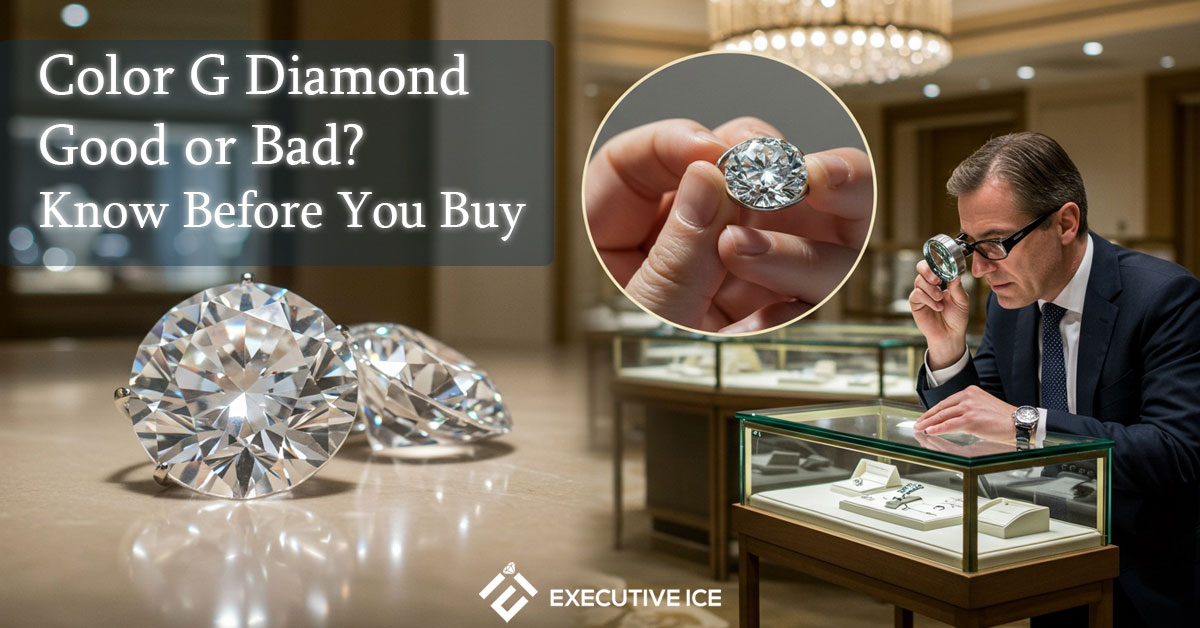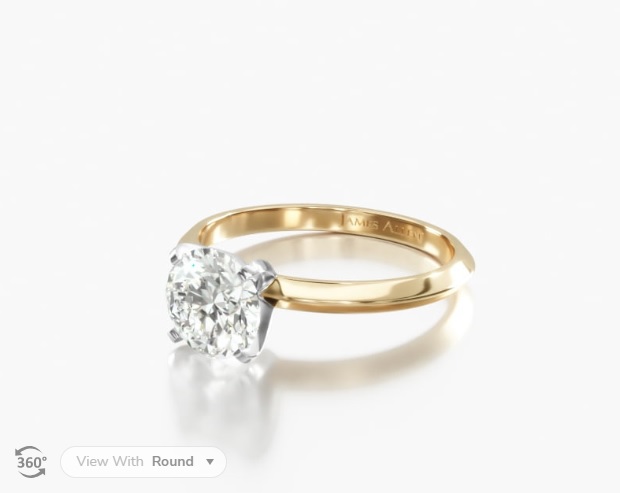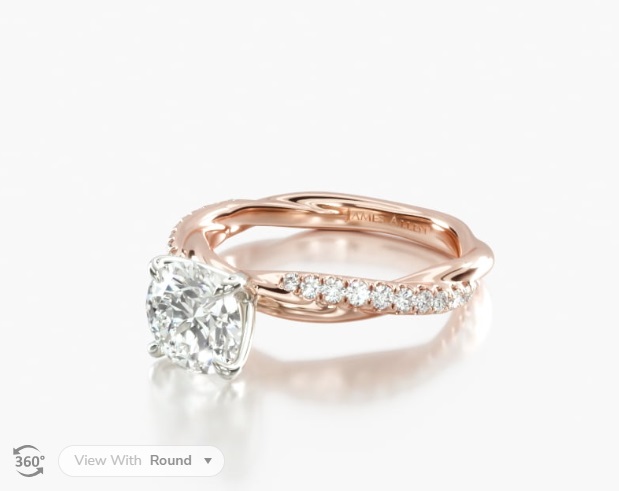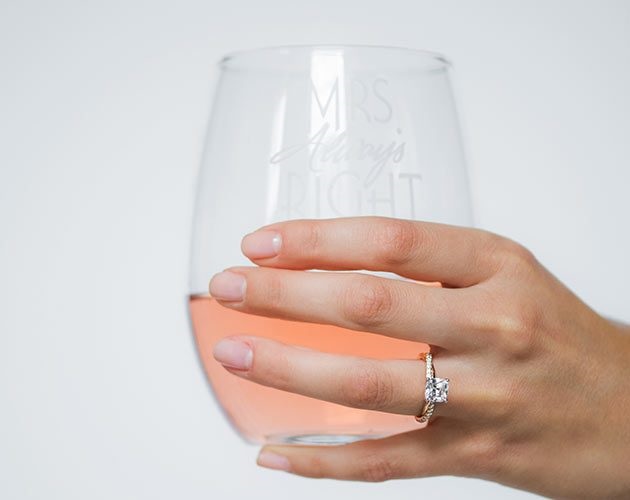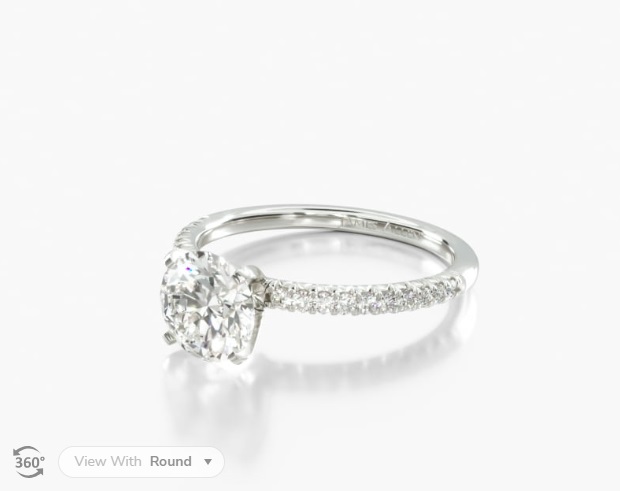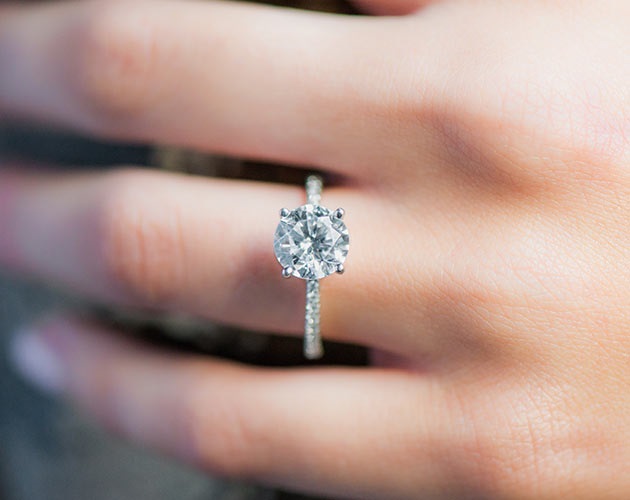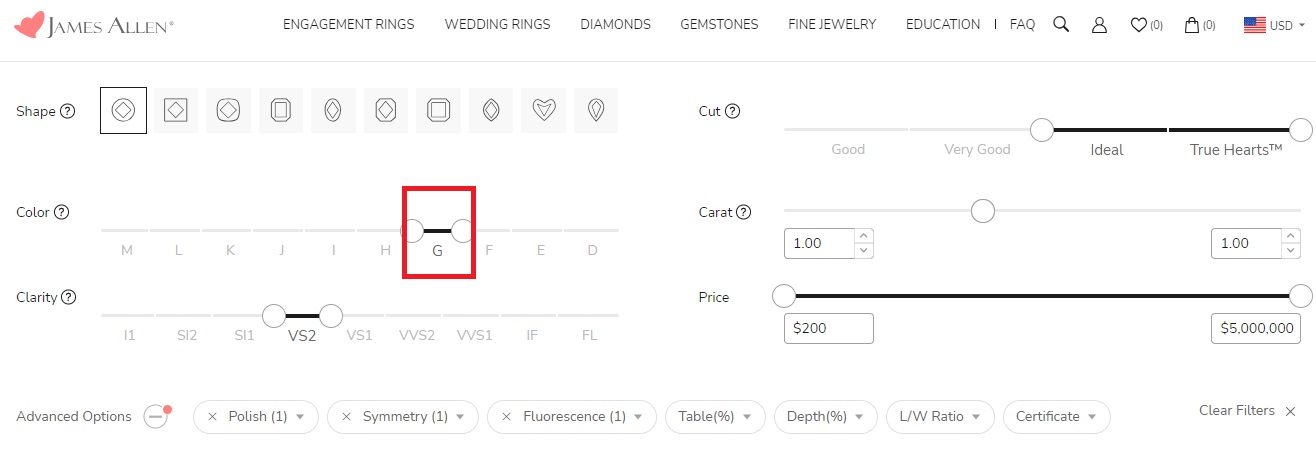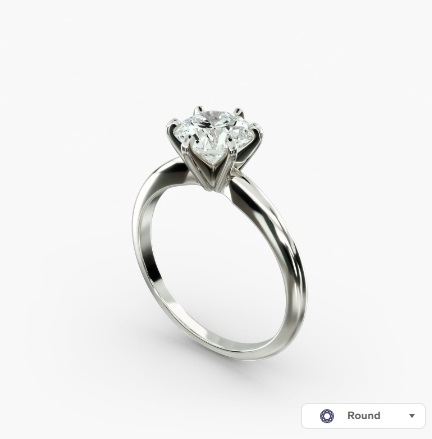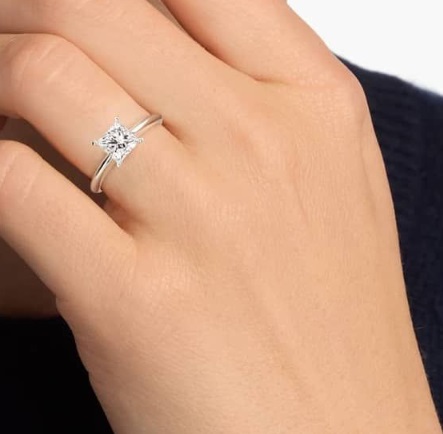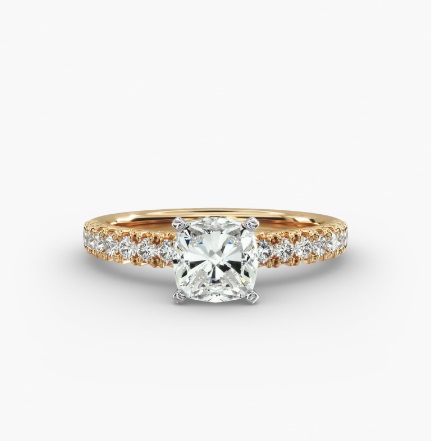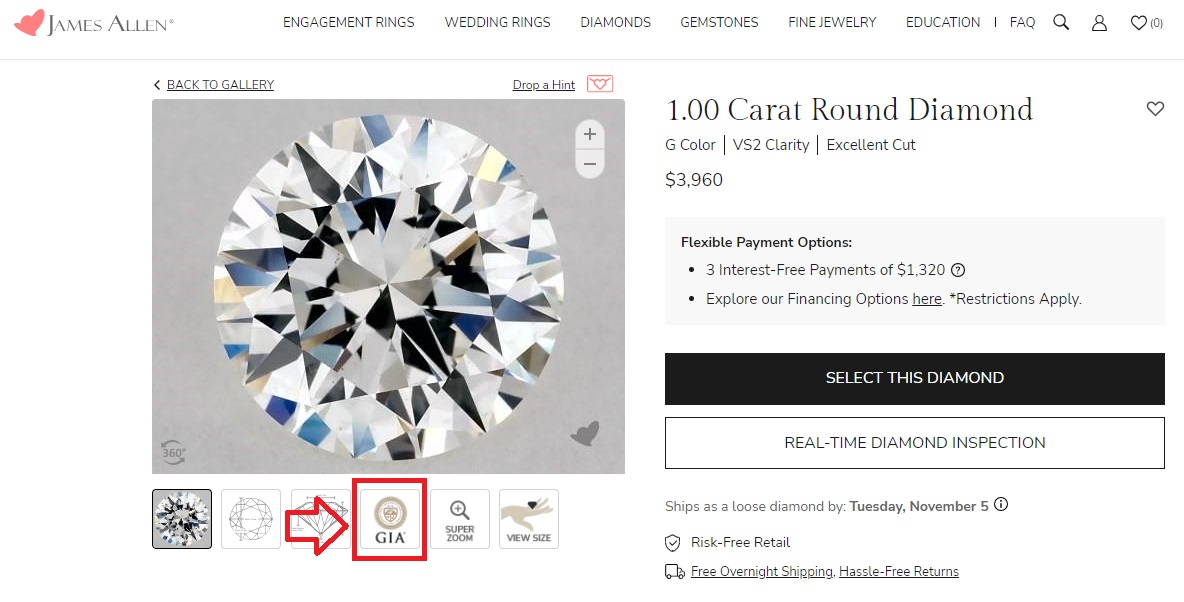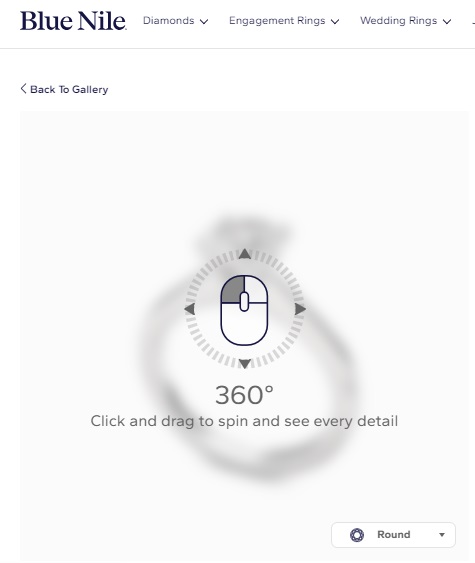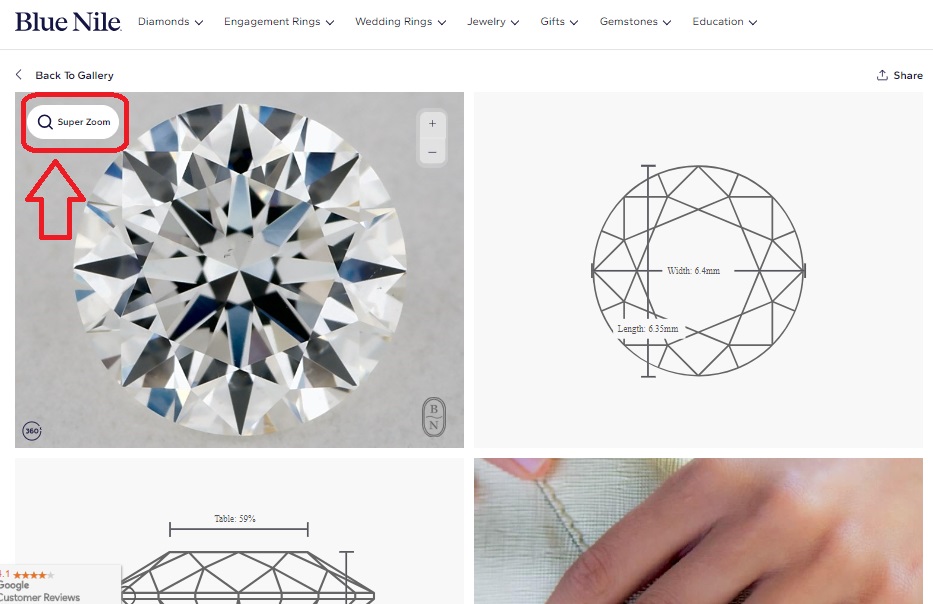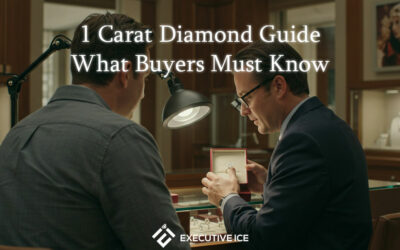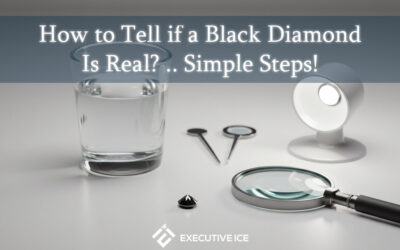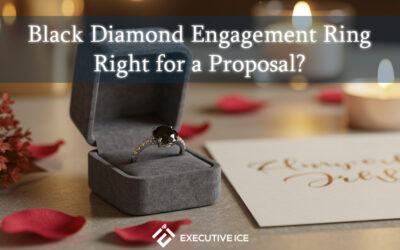If you’ve ever wondered Color G Diamond Good or Bad? or whether a G color diamond is worth it, you’re not alone!
Diamonds come in different color grades, and figuring out if a G color diamond offers good value can feel confusing.
In this article:
We’ll break down what makes G color diamonds special, where they fall on the diamond color scale, and how they compare to other grades.
You’ll learn what to expect when shopping for a G color diamond, the pros and cons, and whether it’s the right choice for your budget.
By the end:
You’ll have a clear idea of whether a G color diamond is the perfect fit, or if you should explore other options.
What Is a G Color Diamond?
-
GIA Color Grading Scale and Where G Color Diamonds Fit
The GIA color grading scale is a system that measures how much color a diamond has, it uses letters from D to Z, with D being completely colorless and Z showing a noticeable yellow or brown tint.
The closer a diamond is to D, the whiter and brighter it looks.
G color diamonds fall in the near-colorless range, which starts at G and ends at J, As shown in the picture below 👇
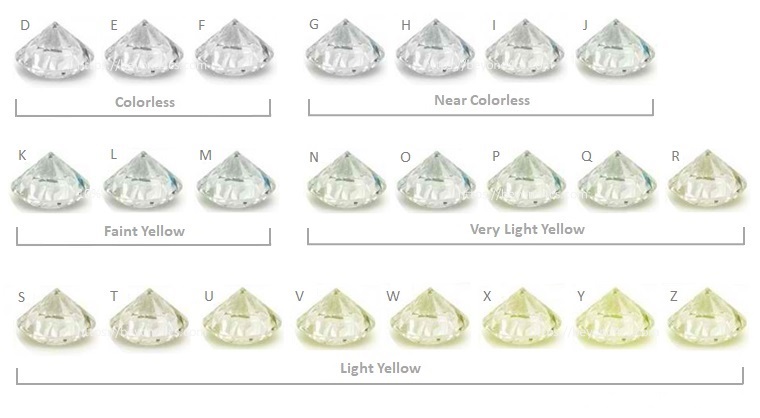
Even though G isn’t completely colorless like D or F, it’s still considered high quality.
Most people won’t notice any difference in color unless they compare it side-by-side with a higher-graded diamond.
-
What Is Near-Colorless Diamonds?
“Near-colorless” means that the diamond has a very faint hint of color, but it’s subtle enough that most people won’t see it unless they look very closely, G diamonds fit perfectly into this category.
They look bright and white, especially once they’re placed in a setting, like gold or platinum, like this for example 👇
James Allen – 14K Yellow Gold 2mm Knife Edge Solitaire Engagement Ring
1.00 Carat Round Diamond – G Color – VS2 Clarity Excellent Cut
How Does G Color Compare to Other Grades?
-
Comparison Between G, H, and F Color Diamonds
When it comes to diamond color grades, F, G, and H are all close neighbors on the GIA scale, but there are small differences between them.
-
F Color Diamond
This is the highest grade in the near-colorless range, it’s almost impossible to spot any color, even under close inspection.
F diamonds look very bright and white, but they come with a higher price tag.
-
G Color Diamond
G diamonds are also near-colorless, with just a hint of color that’s hard to see unless compared side-by-side with a higher-grade diamond.
Most people won’t notice the slight difference between F and G diamonds, but G is more affordable while still looking stunning.
-
H Color Diamond
H diamonds are still in the near-colorless range but may show a tiny bit more warmth, while they are slightly less white than G diamonds, they can still look bright, especially when placed in yellow or rose gold settings like this 👇
James Allen – 14K Rose Gold Pavé Rope Engagement Ring
1.00 Carat Round Diamond – H Color – VS2 Clarity – Excellent Cut
You may be interested in:
How to Buy Diamonds in 2024 Like a Pro
-
Key Differences Between Near-Colorless and Colorless Diamonds
Diamonds graded D, E, and F are considered colorless.
These diamonds are completely free of any noticeable color, making them look exceptionally bright, they tend to be rare and, as a result, more expensive.
On the other hand:
G, H, I, and J diamonds fall under the near-colorless category, these diamonds may show a faint tint of color, but it’s usually hard to spot, especially once they’re set in jewelry.
The key difference is that colorless diamonds offer perfect whiteness, while near-colorless diamonds provide almost the same brilliance at a more affordable price.
You may be interested in:
Glimmer and Save: Best Time to Buy Diamonds Jewelry
Pros and Cons of G Color Diamonds
-
Benefits of Choosing a G Color Diamond
- Looks almost identical to colorless diamonds
G color diamonds appear bright and white, and the difference from higher grades (like D or F) is hard to spot unless they’re compared side-by-side.
- Offers great value for the price
You get the brilliance and beauty of a high-quality diamond without paying the premium price of a completely colorless stone.
- Pairs well with white metal settings
G diamonds look stunning in platinum or white gold settings, where their near-colorless appearance blends seamlessly with the metal, like this 👇
James Allen – Platinum Petite Pavé Engagement Ring
1.00 Carat Round Diamond – G Color – VS1 Clarity – Excellent Cut
- Ideal balance between quality and affordability
A G color diamond gives you a brilliant, high-quality look while staying within a reasonable budget.
-
Potential Drawbacks, Such as Slight Hints of Color
- May show a faint tint of warmth
While most people won’t notice, G diamonds can have a slight hint of color in certain lighting conditions.
- More visible in step-cut shapes
Diamonds with larger, open facets—like emerald or asscher cuts—can make the slight tint easier to spot.
- Less ideal for those seeking perfect whiteness
Buyers who want a completely colorless diamond might find the faint warmth in G color diamonds noticeable.
G Color Diamonds and Diamond Value
-
How G Color Affects Diamond Pricing Compared to Higher or Lower Color Grades
When it comes to diamond pricing, G color diamonds fall into a sweet spot. They’re more affordable than D, E, and F color diamonds (which are considered colorless) but more expensive than lower grades like H, I, or J. Since G diamonds are near-colorless, they offer a high-end look without the extra cost of completely colorless stones.
For example:
You might pay hundreds or even thousands of dollars more for an F color diamond, but the difference in appearance between F and G is barely noticeable.
On the other hand, choosing a G diamond over an H color diamond might cost a bit more, but you get a whiter, brighter-looking stone in return.
-
G Color Diamond Price Range Compared With Other Grades
The price of a diamond depends on several factors, including cut, clarity, diamond carat weight, polish, symmetry, and color.
To give you a clearer picture, we’ve researched the prices for 1-carat, VS2 clarity, excellent cut diamonds with excellent polish and symmetry.
So, below are the average prices across different color grades from two leading online stores, James Allen and Blue Nile.
-
James Allen: Average Prices by Color
- D Color: $6,165
- E Color: $5,310
- F Color: $5,050
- G Color: $4,495 👇
- H Color: $3,715
- I Color: $3,090
- J Color: $2,680
-
Blue Nile: Average Prices by Color
- D Color: $6,535
- E Color: $5,745
- F Color: $5,380
- G Color: $4,900 👇
- H Color: $4,635
- I Color: $3,555
- J Color: $2,910
-
Important conclusions
-
Which Store Offers the Lowest Price for G Color Diamonds?
James Allen offers the more affordable option, with an average price of $4,495 for a G color diamond, compared to $4,900 at Blue Nile.
-
How Much Does the Price Increase When Moving from H to G Color?
On James Allen, the price jumps by about $780 (from $3,715 to $4,495).
-
What’s the Price Difference Between G and F Color Diamonds?
On James Allen, upgrading from G to F will cost you an extra $555 (from $4,495 to $5,050).
On Blue Nile, the upgrade will set you back about $480 (from $4,900 to $5,380).
-
Balancing Clarity and Color for the Best Value
When buying a diamond, it’s important to strike the right balance between color and clarity. If your budget is limited, you don’t have to aim for the highest grade in both areas.
A G color diamond with a VS2 clarity grade (or higher) can still offer a brilliant, high-quality appearance.
The key is To think about what matters most to you.
If you care more about having a white-looking diamond, prioritize color, but if you want a flawless-looking stone, you might sacrifice a little on color and choose a higher clarity grade instead.
Many G color diamonds look amazing, even in larger sizes, especially when the inclusions are minimal and well-placed.
Choosing a G color diamond gives you great value, you’ll get a stone that looks bright and beautiful without going over budget.
When Is a G Color Diamond a Good Choice?
-
Situations Where G Color Diamonds Make Sense
G color diamonds are a great option if you’re looking for a diamond that’s nearly colorless but doesn’t come with the high price tag of D color, E color, or F.
Here are a few situations where choosing a G color diamond makes a lot of sense:
-
You’re Working with a Mid-Range Budget
If you want a diamond that looks bright and white without overspending, G color is a smart choice. It offers a beautiful appearance while keeping costs lower than higher color grades.
-
The Diamond Will Be Set in Platinum or White Gold
G diamonds look especially stunning in white metal settings, where any slight hint of color becomes almost invisible. The bright metal complements the near-colorless diamond, making it appear even more brilliant. Like this 👇
Blue Nile – Classic Six-Prong Solitaire Engagement Ring in 14k White Gold
1.00 Carat G color-VS2 Excellent Cut Round Diamond
-
You Want a Bigger Stone for Less
Choosing a G color diamond allows you to spend more on other features, like carat size, without sacrificing much in terms of color. It’s a good option for those who want a larger diamond that still looks great.
-
Advice on Choosing Based on Diamond Shape and Style
Not all diamond shapes reflect light the same way, so color becomes more noticeable in some shapes than others. Here are a few tips to consider:
-
Best Shapes for G Color Diamonds
Round-cut diamonds are the most forgiving when it comes to color because they reflect light in many directions, making it harder to spot any slight tint. Similarly, princess, cushion, and oval cuts also hide color well, Here are examples of what it looks like 👇
Classic Four-Prong Solitaire Engagement Ring in 14k White Gold
1.00 Carat G color -VS1 Princess Cut Diamond
Blue Nile – French Pavé Diamond Engagement Ring in 14k
1.24 Carat G color-VS1 Cushion Modified Cut Diamond
-
Shapes That Reveal More Color
Emerald and asscher cuts, with their large, open facets, tend to show more color. If you’re considering one of these shapes, a G color diamond will still look near-colorless, but it’s important to inspect it closely to ensure you’re happy with the color.
-
Pairing with Yellow or Rose Gold Settings
If you’re planning to use a warmer-colored metal, like yellow or rose gold, the G color diamond will blend nicely. The slight warmth in the diamond won’t be noticeable next to the colored metal, making it a good match.
You may be interested in:
Engagement Ring is How Many Months Salary? Decisive Guide
How to Spot Yellow Tint in G Color Diamonds
-
Tips for Identifying Yellow Undertones in G Color Stones
Even though G color diamonds are near-colorless, they can sometimes have a very faint yellow tint. Here are a few tips to help you spot any yellow undertones:
-
Compare Side-by-Side
If possible, compare the G color diamond with a higher-grade diamond (like a D or F) under the same lighting, it’s easier to notice subtle differences in color when you have something to compare it to, Here is also a visual 👇
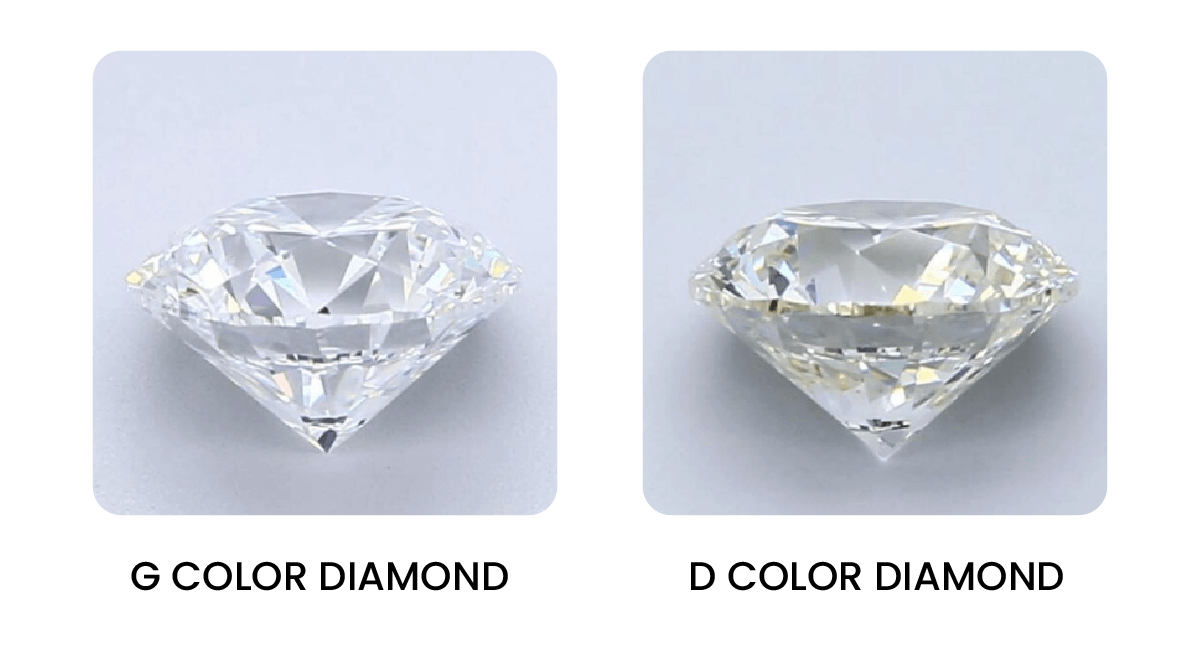
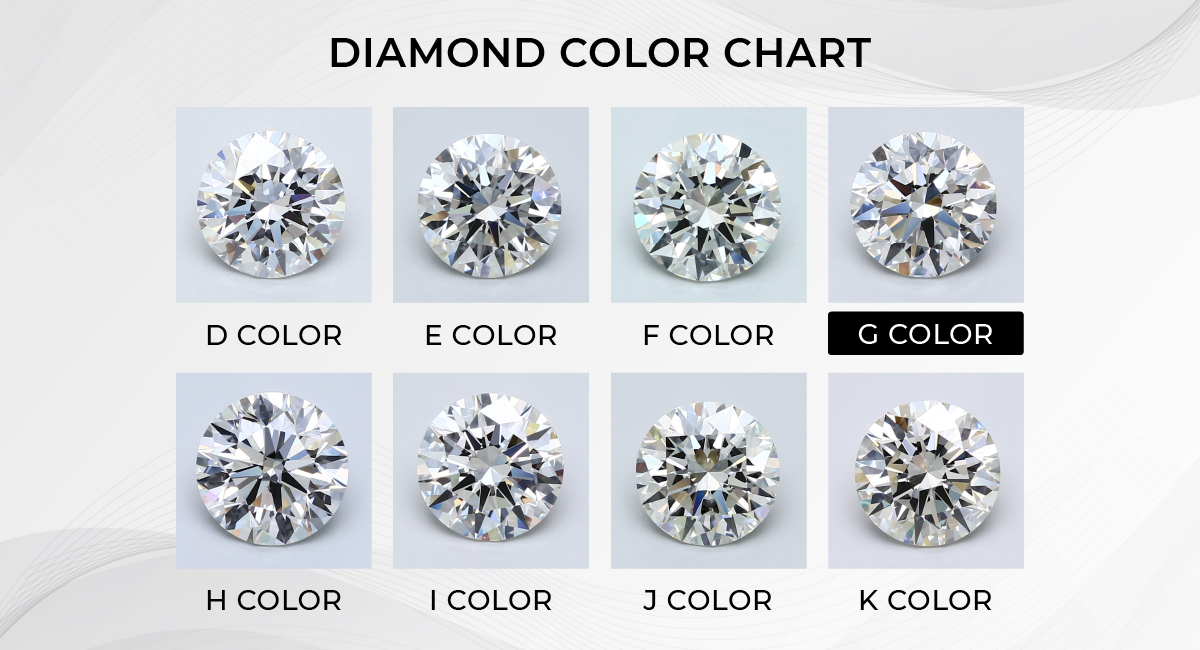
-
Look at the Diamond from the Side
The face-up view of a diamond reflects a lot of light, which can hide any slight color, to see yellow undertones more clearly, look at the diamond from the side, where less light bounces off the surface.
-
Focus on Larger Diamonds
Bigger diamonds tend to show color more easily because they have more surface area, if you’re buying a diamond over 1 carat, pay close attention to any yellow tint in G color stones, but remember, a bigger size necessarily means more cost.
-
Best Lighting Conditions for Color Inspection
Lighting plays a big role in how color shows up in a diamond. Here are the best conditions to inspect color:
-
Natural Daylight
Look at the diamond in natural daylight, ideally near a window, but not in direct sunlight. Daylight gives you the most accurate view of any color present in the stone.
-
Bright White LED Lighting
Jewelry stores often use bright LED lights to make diamonds look their best. But these lights can also hide color, so it’s a good idea to inspect the diamond in other lighting as well.
-
Soft Indoor Lighting
Some yellow undertones might become more noticeable in soft, warm indoor lighting, like in your home. If you’re shopping in-store, ask to see the diamond under different types of light to get a true sense of its color.
Expert Shopping Tips for G Color Diamonds
-
Importance of High-Quality Images, Videos, and GIA Certificates
When buying a diamond, especially a G color diamond, clear images, videos, and a GIA certificate are essential to making an informed decision.
The GIA certificate acts like a report card for the diamond, detailing its quality, including color, clarity, and any inclusions. This way, you’ll know exactly what you’re getting.
Many trusted online stores, such as James Allen and Blue Nile, provide a GIA certificate with each diamond.
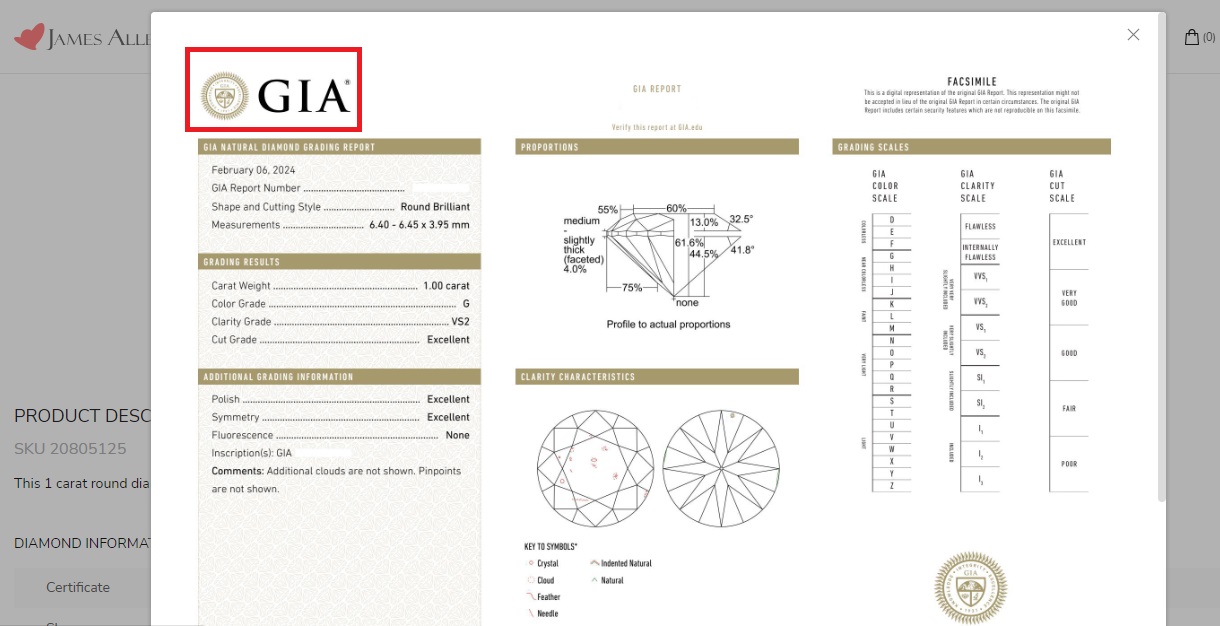
These stores also offer a 360-degree view of the diamond, allowing you to rotate and zoom in to inspect the diamond from all angles. This feature helps you spot any inclusions or yellow undertones before making your purchase.
Conclusion
-
Summary of Key Takeaways
- G color diamonds fall in the “near-colorless” range, meaning they look bright and white to most people but cost less than completely colorless diamonds.
- They offer great value, giving you a balance between quality and price without noticeable color in most settings.
- Certain settings and shapes make G color diamonds look even betterو round cuts and white gold or platinum settings enhance their brilliance.
- It’s important to check lighting and clarity when choosing a G color diamond.
Viewing it under different lighting and using high-quality images or 360-degree videos helps avoid surprises. - GIA certification is a must, it confirms the diamond’s true color grade and ensures you’re making a smart purchase.
Final Thoughts on Whether G Color Diamonds Are a Good Option
If you want a diamond that looks bright, beautiful, and high-quality without the premium price tag of colorless grades, G color diamonds are a smart choice.
They offer a near-colorless appearance that works well in most settings, and for many buyers, the small difference in color compared to higher grades isn’t worth the extra cost.
Whether you’re looking for the best value or a bigger diamond for your budget, a G color diamond delivers both elegance and savings, making it a great option for most shoppers.
FAQs
- Is a color G diamond good?
Yes, a G color diamond is an excellent choice.
It falls in the near-colorless range, meaning it looks white to most people, especially once set in jewelry.
It offers a great balance between appearance and value, making it a smart option for those who want a bright diamond without paying for a completely colorless grade. - Which is better, G or F in a diamond?
F color diamonds are technically whiter than G color diamonds, but the difference is minimal and often hard to notice unless compared side by side.
G diamonds cost less while still looking bright and white, making them the better option for those prioritizing value.
If budget isn’t a concern, F color is slightly superior in color purity. - Should I buy H or G color diamond?
If you want a whiter-looking diamond, G color is the better choice because it has less warmth than H color.
However, H color diamonds can still appear near-colorless, especially in yellow or rose gold settings.
If budget is a factor, H color saves money while still looking great in many settings. - Is G VS1 a good diamond?
Yes, a G VS1 diamond is a high-quality choice.
The G color keeps it looking bright and near-colorless, while VS1 clarity means it has very small inclusions that are hard to see even under magnification.
It’s an excellent option for those who want a diamond that looks flawless to the naked eye without paying for the highest clarity grades.

